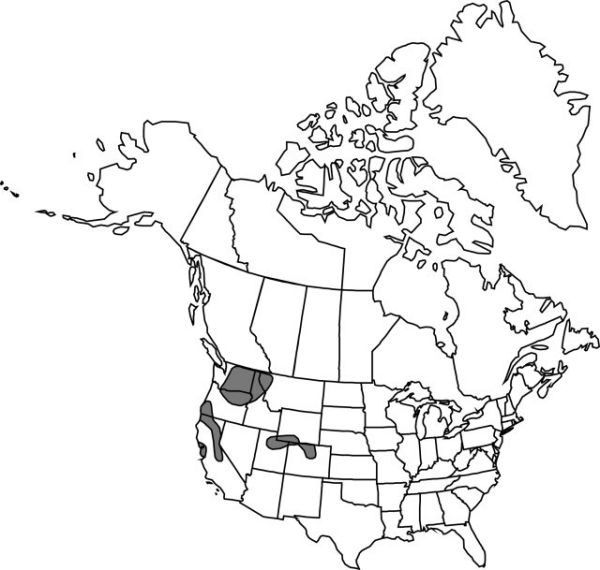Cypripedium fasciculatum
Proc. Amer. Acad. Arts 17: 380. 1882.
Plants erect, 6–35 cm in flower, taller in fruit; inflorescences nodding in flower, erect in fruit. Leaves 2, initially near middle of stem, subopposite, wide-spreading, distal portion elongating greatly in fruit; blade elliptic to ovate-orbiculate, 4–12 × 2.5–7.5 cm. Flowers (1–)2–4; sepals dull yellow, marked and suffused often intensely with reddish brown or dark purple; dorsal sepal lanceolate, 13–25 × 3–8 mm; lateral sepals connate, synsepal 11–23 × 4–9 mm; petals porrect-spreading, same color as sepals, flat, ovate-lanceolate to lance-acuminate, 10–23 × 6–17 mm; lip color of sepals, usually less intensely marked, mostly obovoid, 8–14(–25) mm, orifice basal, 4–5 mm; staminode ellipsoid to oblong. 2n = 20.
Phenology: Flowering Apr–Aug.
Habitat: Moist to dry coniferous forests and thickets
Elevation: 0–3200 m
Distribution

Calif., Colo., Idaho, Mont., Oreg., Utah, Wash., Wyo.